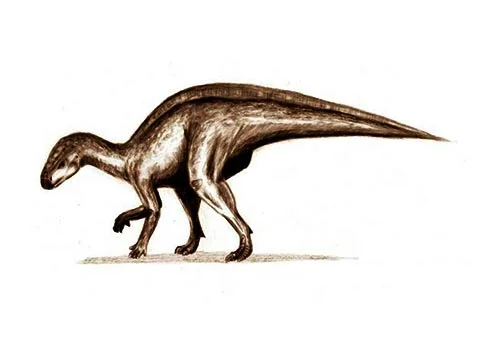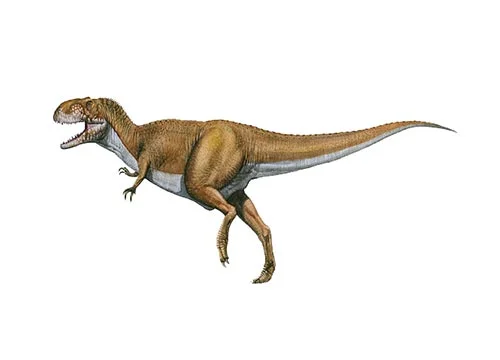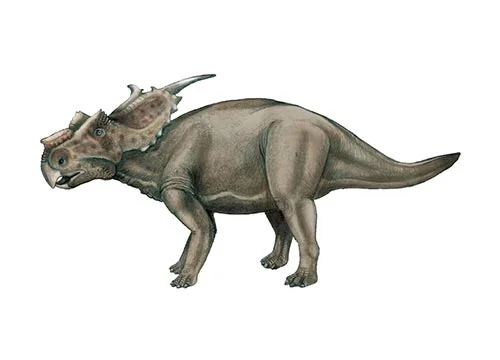Rhabdodon (Fluted tooth)

Rab-doe-don
Matheron - 1869
Herbivore
Estimated 5-6 meters long
Euornithopod
R. priscus (type)
Czech Republic, France, Romania and Spain
Late Cretaceous, 70-66 million years ago
Rhabdodon Facts
Rhabdodon is a genus of herbivorous dinosaur that lived during the Late Cretaceous period, approximately 70-66 million years ago. The genus name, Rhabdodon, is derived from the Greek words “rhabdos” meaning “rod” or “staff”, and “odon” meaning “tooth”, referring to the fluted shape of its teeth.
Rhabdodon was a member of the iguanodont group of dinosaurs, which were characterized by their bipedal stance, long tails, and prominent thumb spikes. It was a relatively small dinosaur, reaching lengths of up to 5-6 meters (16-20 feet) and weighing around 500-1000 kilograms (1100-2200 pounds).
The teeth of Rhabdodon were particularly unique, with deep grooves or flutes running along their length. This specialized dentition likely allowed Rhabdodon to efficiently process tough, fibrous vegetation. Fossils of Rhabdodon have been found in several locations throughout Europe, including France, Spain, and Romania.
Rhabdodon likely lived in herds, and would have been preyed upon by large theropod dinosaurs such as Tarbosaurus or Tyrannosaurus. The discovery of Rhabdodon has provided valuable insights into the diversity and ecology of herbivorous dinosaurs during the Late Cretaceous period, and has helped to unravel the mysteries of the prehistoric past.
Although much remains to be learned about this fascinating animal, ongoing studies and discoveries are shedding new light on the biology and behavior of these enigmatic giants, and helping us to better understand the evolution of life on Earth.



